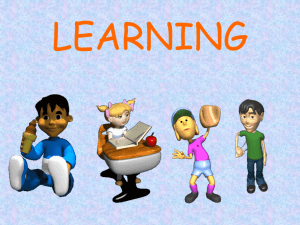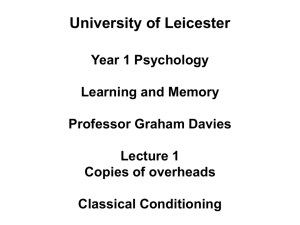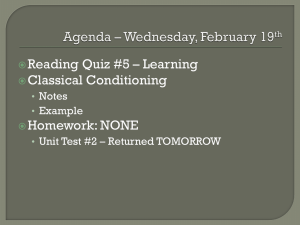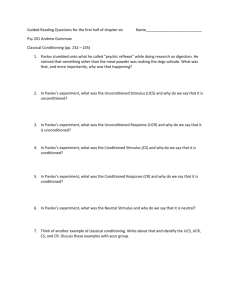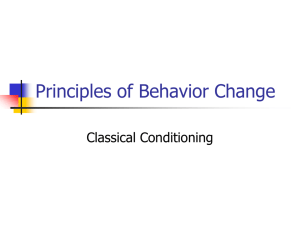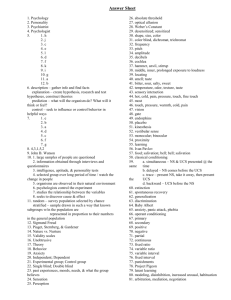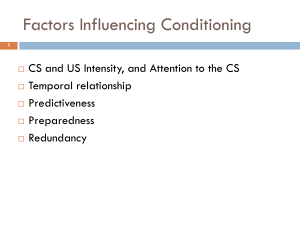LEARNING
advertisement
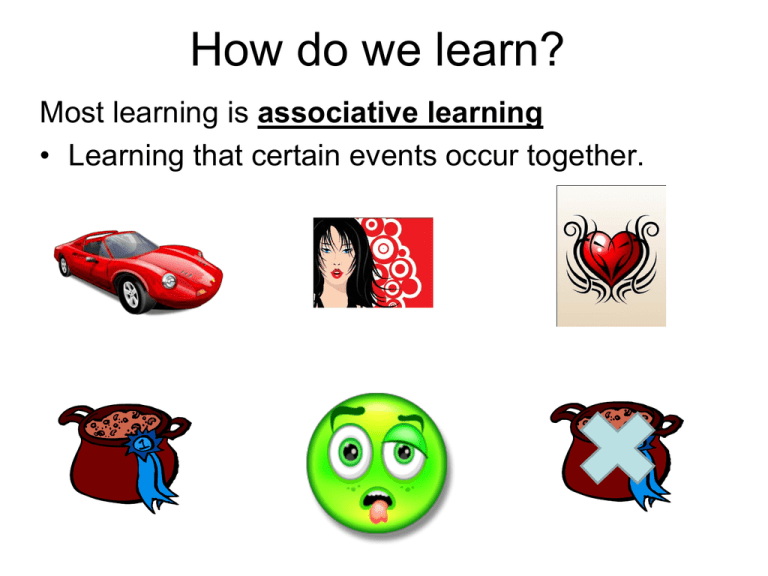
How do we learn? Most learning is associative learning • Learning that certain events occur together. Three Main Types of Learning •Classical Conditioning •Operant Conditioning • Cognitive Processes in Learning Observational Learning Latent Learning Abstract Learning Insight Learning Classical Conditioning It all started with: Ivan PavlovPhysiologist researching salivation! Demonstration— Salivate! Unconditioned Stimulus (UCS): a stimulus that naturally and automatically triggers a response. Unconditional Response (UCR): the unlearned, naturally occurring response to the UCS. Conditioned Stimulus (CS): an originally irrelevant stimulus that, after association with the UCS, comes to trigger a response. Conditioned Response (CR): the learned response to a previously neutral stimulus. Second Order Conditioning • AKA Higher Order Conditioning • After the dog salivated to the bell, then they paired a light with the bell and the dog began to salivate to the light. • EX--If someone is conditioned that drinking alcohol is cool and then whenever they see someone drinking they are also smoking, then will also be conditioned that smoking is cool. Pavlov spent the rest of his life outlining his ideas. He came up with 5 critical terms that together make up classical conditioning. • Acquisition • Extinction • Spontaneous Recovery • Generalization • Discrimination Acquisition • The initial stage of learning. • The phase where the neutral stimulus is associated with the UCS so that the neutral stimulus comes to elicit the CR (thus becoming the CS). Does timing matter? Timing is EVERYTHING! •The CS should come before the UCS •They should be very close together in timing. Timing • Delayed conditioning—Best one— CS then US while CS is still present Less Effective Methods: • Trace Conditioning—CS, Break, US • Simultaneous Conditioning—CS and US together • Backward Conditioning—US and then CS-- Demonstration— Bell! Real World Example Taste Aversions • John Garcia—conditioning of aversion through association • Adaptive—Survival • Salient—Noticeable • Aversive Conditioning! • What is your personal taste aversion? Extinction • The diminishing of a conditioned response. • Will eventually happen when the UCS does not follow the CS. • Real World Example-- Is extinction permanent? Spontaneous Recovery • The reappearance, after a rest period, of an extinguished conditioned response. • Real World Example-- PAVLOV!!!! Generalization • The tendency, once a response has been conditioned, for stimuli similar to the CS to elicit similar responses. • Real World Example-- Discrimination • The learned ability to distinguish between a CS and other stimuli that does not signal UCS. • Real World Example-- Demonstration— Squirt bottle! Little Albert—John B. Watson

